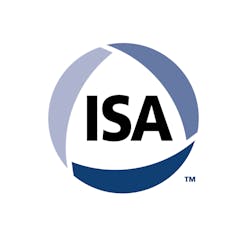ISA-106 Releases First Procedure Automation Technical Report
In July 2013, Automation World ran a feature article on procedure automation, explaining how the application of batch manufacturing methods can be used to improve continuous process operations. A significant portion of that article focused on the work of the ISA-106 standards committee on Procedure Automation for Continuous Process Operations. The work of this committee, formed in 2010, concentrates on standardizing methods—built on the work of engineers at companies like Bayer and Dow Chemical—that break continuous processes into operating states and automate the procedures for moving from one state to another.
Just a few weeks after the article was published came news from Maurice Wilkins, vice of global strategic marketing for Yokogawa, and managing director of the ISA-106 committee, that the committee had produced its first deliverable: “Procedure Automation for Continuous Process Operations – Models and Terminology.” For those of you unfamiliar with how standards develop in committee, the fact that this technical report was developed in just over three years after the first meeting is impressive and underscores the industry’s interest in the committee’s work.
“The manufacturing community immediately supported the standard and joined the committee in large numbers,” says Wilkins. Co-chairs of the ISA-106 committee are Yahya Nazer of Dow Chemical and Bill Wray of Bayer Material Sciences, and the secretary is Charlie Green of Aramco Services. The committee’s former co-chair is Marty King of Chevron.
On the ISA download page for the technical report, the report is described as providing an “overview of the benefits, best practices, and language, including terms and definitions, for applying procedure automation across the continuous process industries. In agreement with the scope of the ISA-106 Committee, this technical report focuses on automated procedures that primarily reside on systems within the supervisory control, monitoring, and automated process control section (as defined by ISA-95 functional levels 1 and 2) of a production process (as defined by ISA-95 functional level 0). It was not the intent of the committee to have this technical report focus on procedure execution at the operations management functional level (as defined by ISA-95 level 3).”
This “technical report clearly establishes the value of automating procedures for continuous processes and serves as a solid foundation for the reports and standards to follow,” says Green.
“With strong end user representation, especially from energy and chemical companies, coupled with representation from consultants; engineering, procurement and construction companies; and system suppliers we had a great source of knowledge and experience to draw upon” to create this technical report, says Dave Emerson, Director of the U.S. Development Center for Yokogawa and ISA-106 Editor. “This first technical report should generate feedback for the committee that will be used in creating a standard.”
The committee is now working on its second technical report that addresses work processes for automating procedures in continuous process operations, says Wilkins. This draft is only now in the early stages of being created, “so it is a good time for new members to join the committee and provide contributions based upon their experience,” he adds.
In parallel with this second technical report, the ISA-106 committee will also start work on the standard itself.
The work involved in creating this standard involves “digging into sequencing concepts that have been around a long time, but applying them to a new context,” says Bryan Jones of Emerson. “The next step [for the committee] is getting feedback from industry to help guide it moving forward and encouraging more participation to ensure we create a standard that is reasonable to adopt.”
If you're interested in working with this committee, please contact Charley Robinson for more information.Liked this article? Download the entire playbook here.
About the Author
David Greenfield, editor in chief
Editor in Chief

Leaders relevant to this article:
